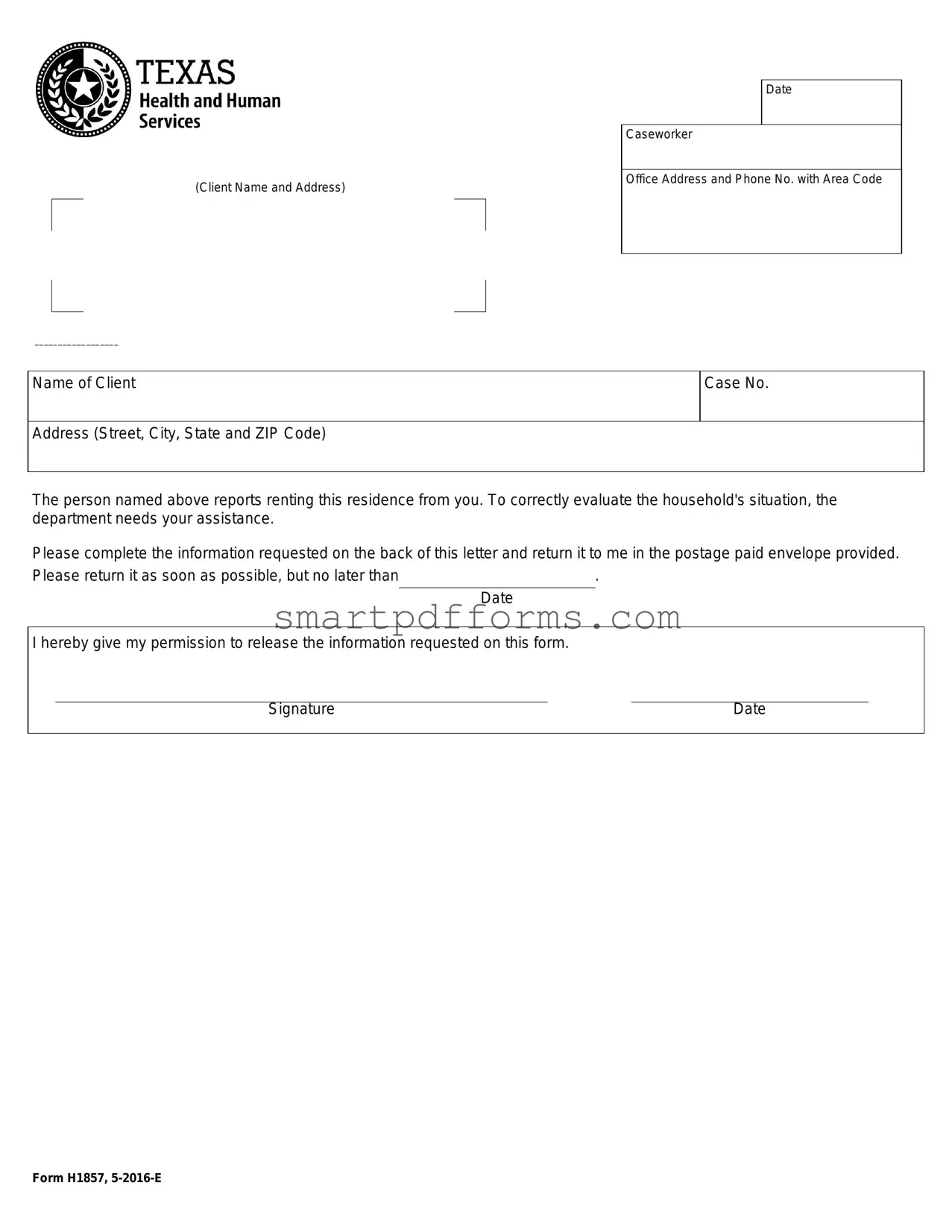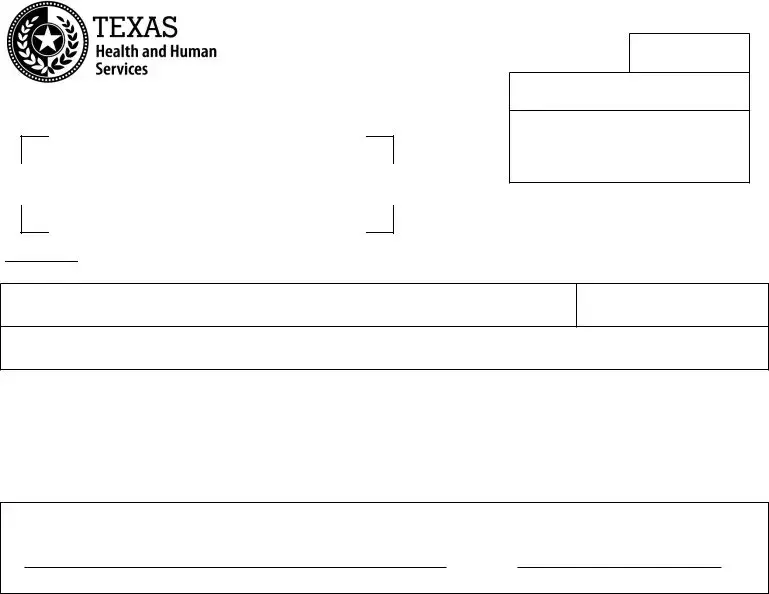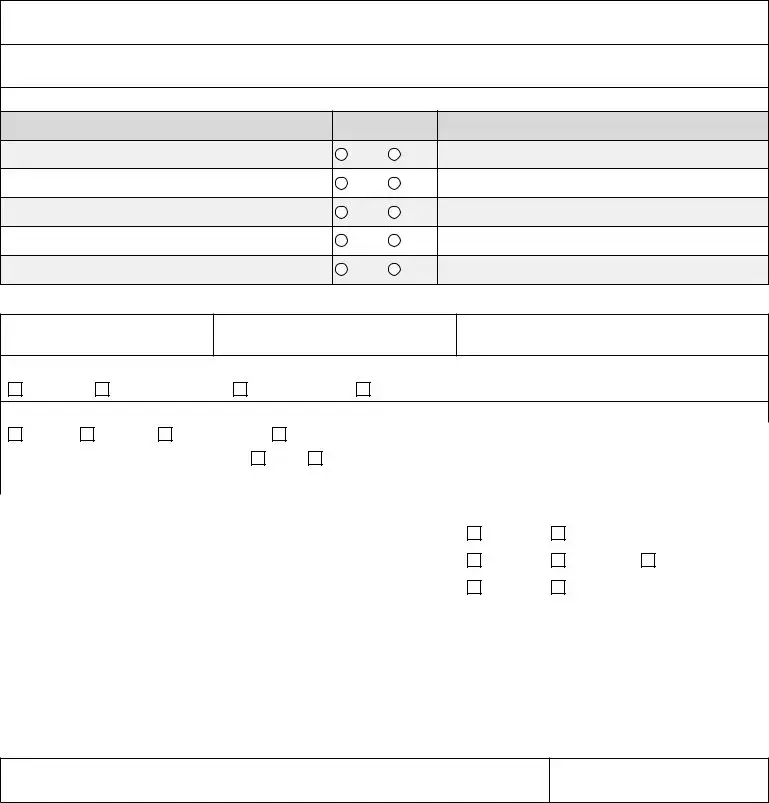Blank H1857 PDF Template
The H1857 form, also known as the Landlord Verification Form, is a crucial document designed to collect information about a tenant's living situation directly from their landlord. This form assists government departments in accurately assessing and evaluating the household circumstances of an applicant by requesting details such as tenant move date, the composition of the residence, rent payment specifics, and utility responsibility. By filling out and returning this form, landlords play an essential role in ensuring that their tenants can access the support and services they need. Ready to contribute to a seamless verification process? Click the button below to fill out the form.
Make This Document Now


